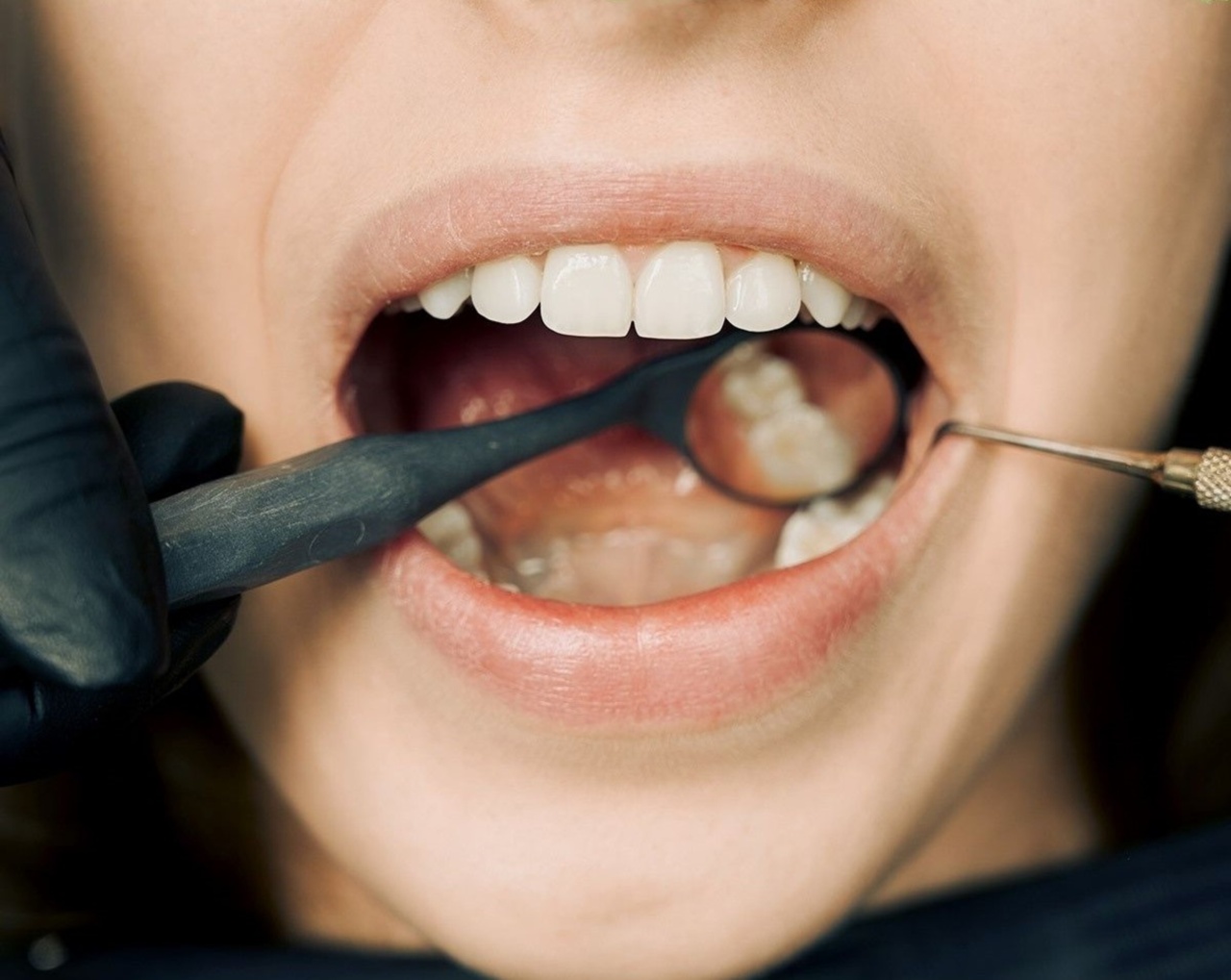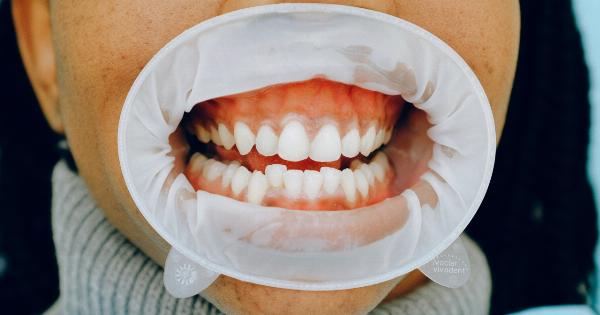Gum disease, also known as periodontal disease, is a common oral health condition that affects the tissues and bones surrounding the teeth. It occurs when there is an infection caused by bacteria in the gum tissues.
If left untreated, gum disease can lead to more severe complications, such as tooth loss and other serious oral health issues.
The Stages of Gum Disease
Gum disease progresses through different stages, each with its own set of symptoms and consequences. Understanding these stages is essential for early detection and effective treatment. The three primary stages of gum disease are:.
1. Gingivitis
Gingivitis is the earliest stage of gum disease. It is characterized by red, swollen, and bleeding gums. At this stage, the infection is limited to the gums and has not yet affected the bone and supporting tissues around the teeth.
Proper oral hygiene practices, such as regular brushing and flossing, along with professional cleanings from a dentist, can help reverse gingivitis.
2. Periodontitis
If left untreated, gingivitis can progress to the more severe stage of gum disease called periodontitis. At this stage, the infection starts to spread beneath the gum line, causing the gums to pull away from the teeth and form pockets.
These pockets become a breeding ground for bacteria, leading to further damage to the tissues and bone supporting the teeth.
3. Advanced Periodontitis
In the final stage of gum disease, known as advanced periodontitis, the infection has caused significant damage to the gums, bone, and connective tissues that hold the teeth in place. Teeth may become loose, shift in position, or even fall out.
Advanced periodontitis requires immediate professional intervention to salvage any remaining teeth and prevent further complications.
Causes and Risk Factors of Gum Disease
Gum disease is primarily caused by the presence of bacteria in the mouth. However, several factors can increase the risk of developing gum disease, including:.
Poor Oral Hygiene
Inadequate brushing and flossing can lead to the accumulation of plaque, a sticky film of bacteria that forms on the teeth. If not removed, this plaque hardens into tartar, which can only be removed by professional dental cleanings.
Tartar buildup irritates the gums and leads to gum disease.
Smoking and Tobacco Use
Smoking weakens the immune system and makes it harder for the body to fight off infections, including gum disease.
Tobacco use also interferes with proper gum tissue healing, making smokers more susceptible to gum disease and delaying the healing process.
Genetic Factors
Some individuals may have a genetic predisposition to gum disease. If gum disease runs in your family, you may be more prone to developing the condition, even with proper oral hygiene practices.
Hormonal Changes
Fluctuations in hormone levels, such as those occurring during puberty, pregnancy, and menopause, can make the gums more sensitive and susceptible to gum disease. It is crucial to maintain good oral hygiene practices during these times.
Medical Conditions
Certain systemic conditions, such as diabetes or HIV/AIDS, weaken the immune system and increase the risk of gum disease. Medications used to treat various health conditions can also have side effects that affect oral health.
Signs and Symptoms of Gum Disease
Gum disease presents various symptoms, and it is essential to be aware of these signs to seek timely professional help. Some common signs and symptoms include:.
1. Red, Swollen, or Tender Gums
If your gums appear redder than usual, feel swollen, or are tender to the touch, it may be an early indication of gum disease. Healthy gums should be pale pink and firm to the touch.
2. Bleeding Gums
Bleeding gums while brushing, flossing, or eating is not normal and should not be ignored. It is often an early sign of gum disease and indicates that the gums are inflamed and irritated.
3. Persistent Bad Breath
Chronic bad breath, also known as halitosis, can be a sign of gum disease. The bacteria causing gum disease release toxins that produce an unpleasant odor.
4. Receding Gums
If your teeth appear longer than before or if your gums are pulling away from the teeth, it may signify gum recession.
This is a common symptom of gum disease and should be addressed by a dentist to prevent further damage to the supporting structures of the teeth.
5. Loose or Shifting Teeth
Gum disease weakens the tissues and bone supporting the teeth, leading to tooth mobility. If you notice any changes in tooth position or if your teeth feel loose, it is crucial to seek immediate dental attention.
Prevention and Treatment of Gum Disease
Preventing gum disease is easier than treating it once it has progressed. The following oral hygiene practices can help maintain gum health:.
1. Brushing Twice a Day
Brush your teeth for at least two minutes, twice a day, using a soft-bristle toothbrush and fluoride toothpaste. Proper brushing technique involves gentle circular motions along the gum line and all tooth surfaces.
2. Flossing Daily
Regular flossing removes plaque and food particles from between the teeth and along the gum line, where a toothbrush cannot reach. It helps prevent gum inflammation and decay.
3. Using Antiseptic Mouthwash
Mouthwash helps kill bacteria and freshen breath. Look for an antiseptic mouthwash that is approved by dental professionals for combating gum disease.
4. Regular Dental Check-ups
Visit your dentist regularly for professional cleanings and check-ups. A dental professional can detect early signs of gum disease and provide appropriate treatment before it worsens.
5. Healthy Lifestyle Choices
Eating a balanced diet, limiting sugary foods and beverages, avoiding tobacco use, and managing stress can all contribute to maintaining good oral health and preventing gum disease.
Treatment for gum disease may include:
1. Scaling and Root Planing
Also known as deep cleaning, this non-surgical procedure removes plaque and tartar buildup from below the gum line and smooths the tooth roots to prevent bacteria from reattaching. Local anesthesia may be used for comfort during the procedure.
2. Antibiotics
If the infection is severe or has spread, your dentist may prescribe antibiotics to combat the bacteria and prevent further complications.
3. Gum Surgery
In advanced cases of gum disease, surgery may be necessary to repair and regenerate damaged tissues and bones. The specific type of procedure will depend on the extent of the damage.
Caring for Bleeding Gums
Bleeding gums should never be ignored, as they are often an indication of gum disease or other oral health issues. Here are some steps to care for bleeding gums:.
1. Gentle Brushing
Brush your teeth gently using a soft-bristle toothbrush. Aggressive brushing can worsen gum inflammation and cause more bleeding.
2. Regular Flossing
Flossing daily is crucial for removing plaque and food particles from between the teeth and along the gum line. Be gentle and avoid snapping the floss against the gums.
3. Rinse with Saltwater
Rinsing your mouth with a warm saltwater solution can help reduce inflammation and promote healing. Dissolve half a teaspoon of salt in a glass of warm water and swish it around your mouth for 30 seconds before spitting it out.
4. Use a Mouthwash for Bleeding Gums
Look for an antiseptic mouthwash specifically designed for bleeding gums. These mouthwashes can help reduce bacteria and soothe gum inflammation.
5. Visit Your Dentist
If you experience persistent bleeding gums, it is important to schedule an appointment with your dentist. They can assess your oral health, determine the underlying cause of the bleeding, and recommend appropriate treatment.


























